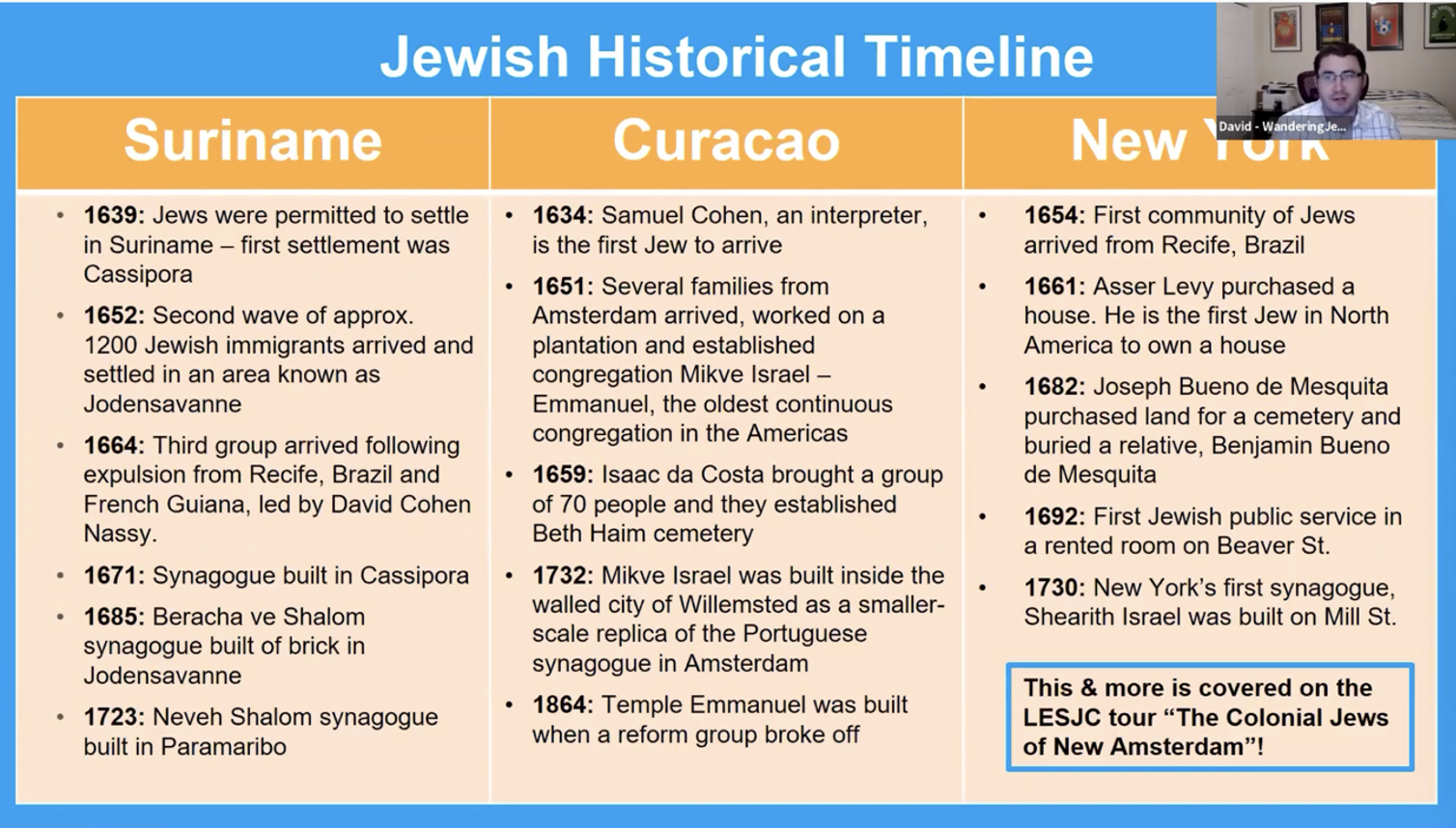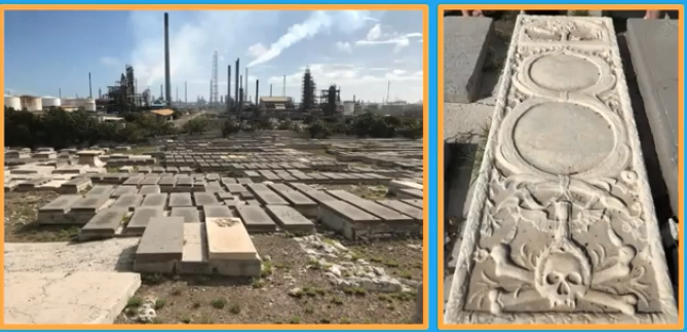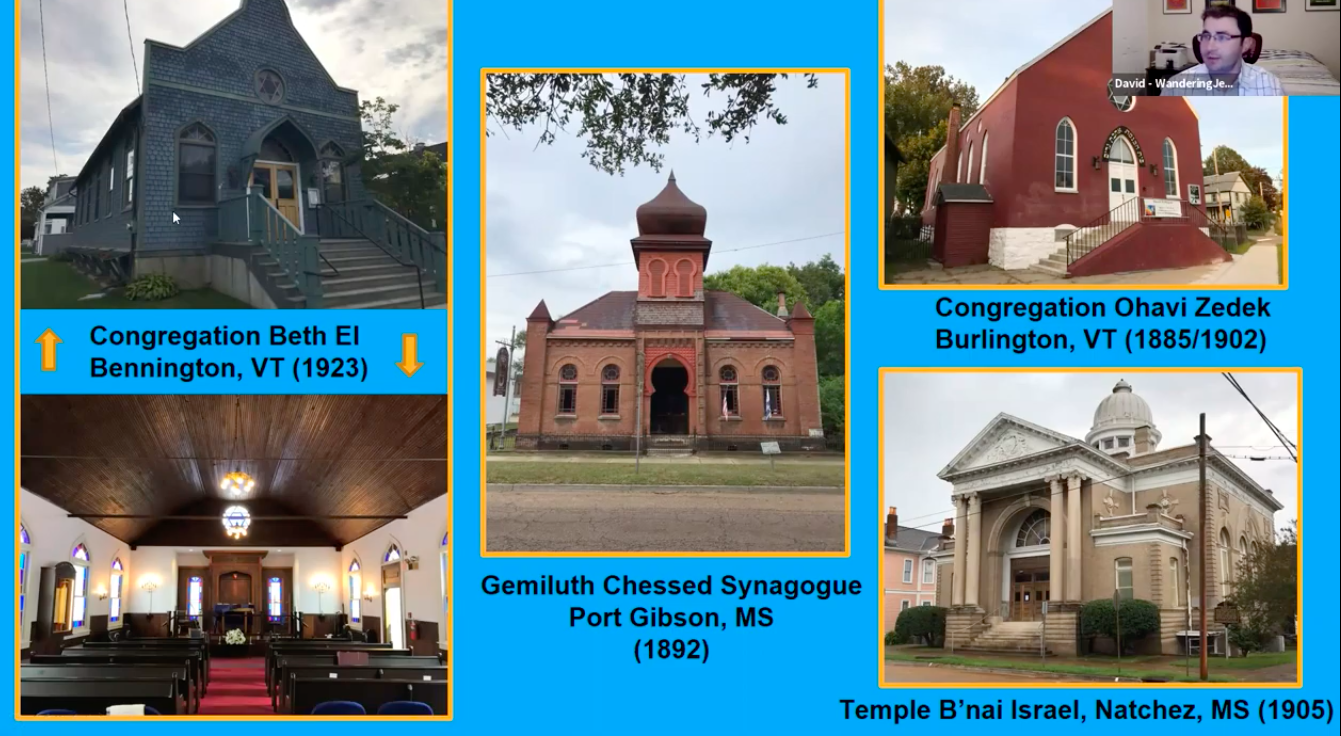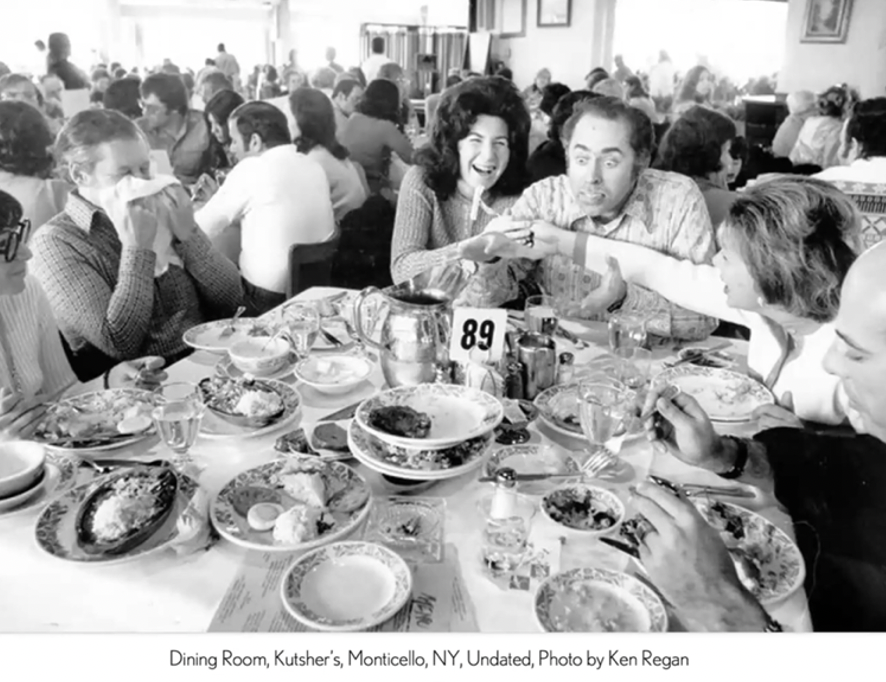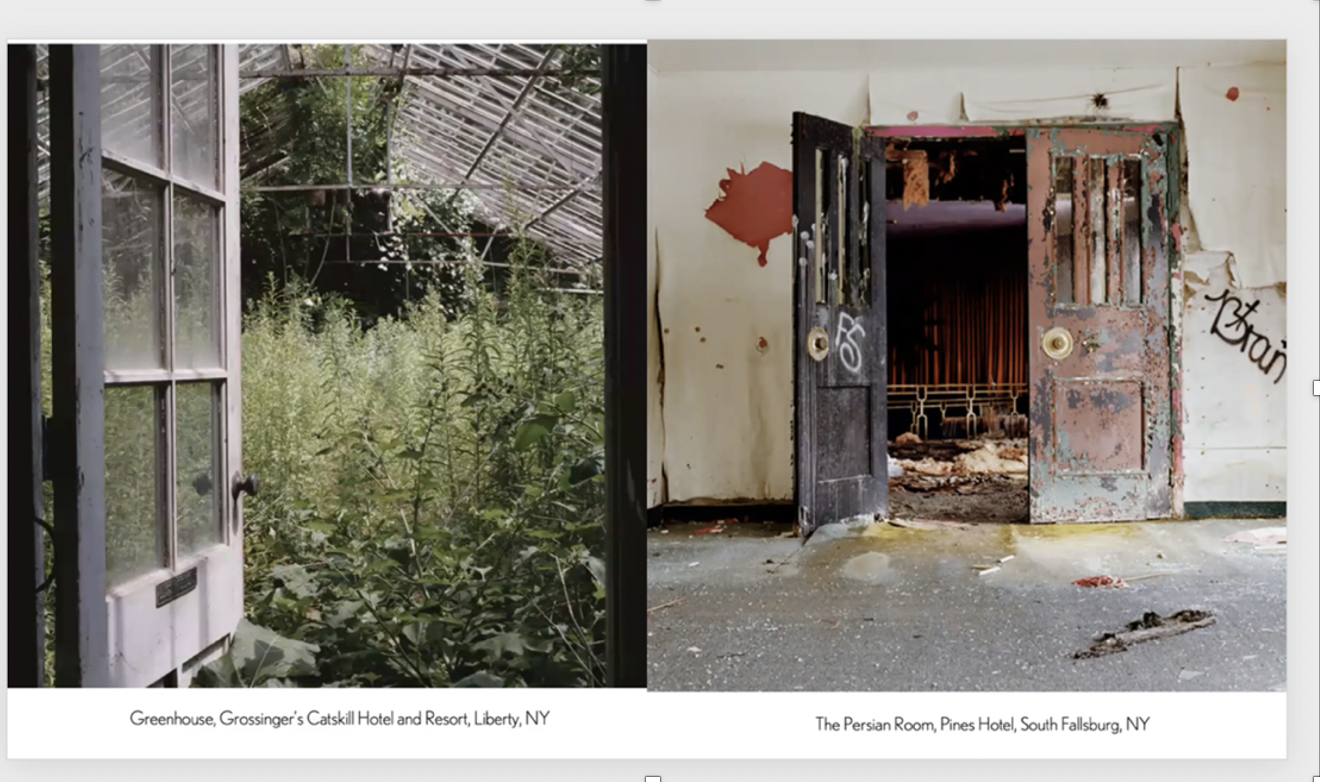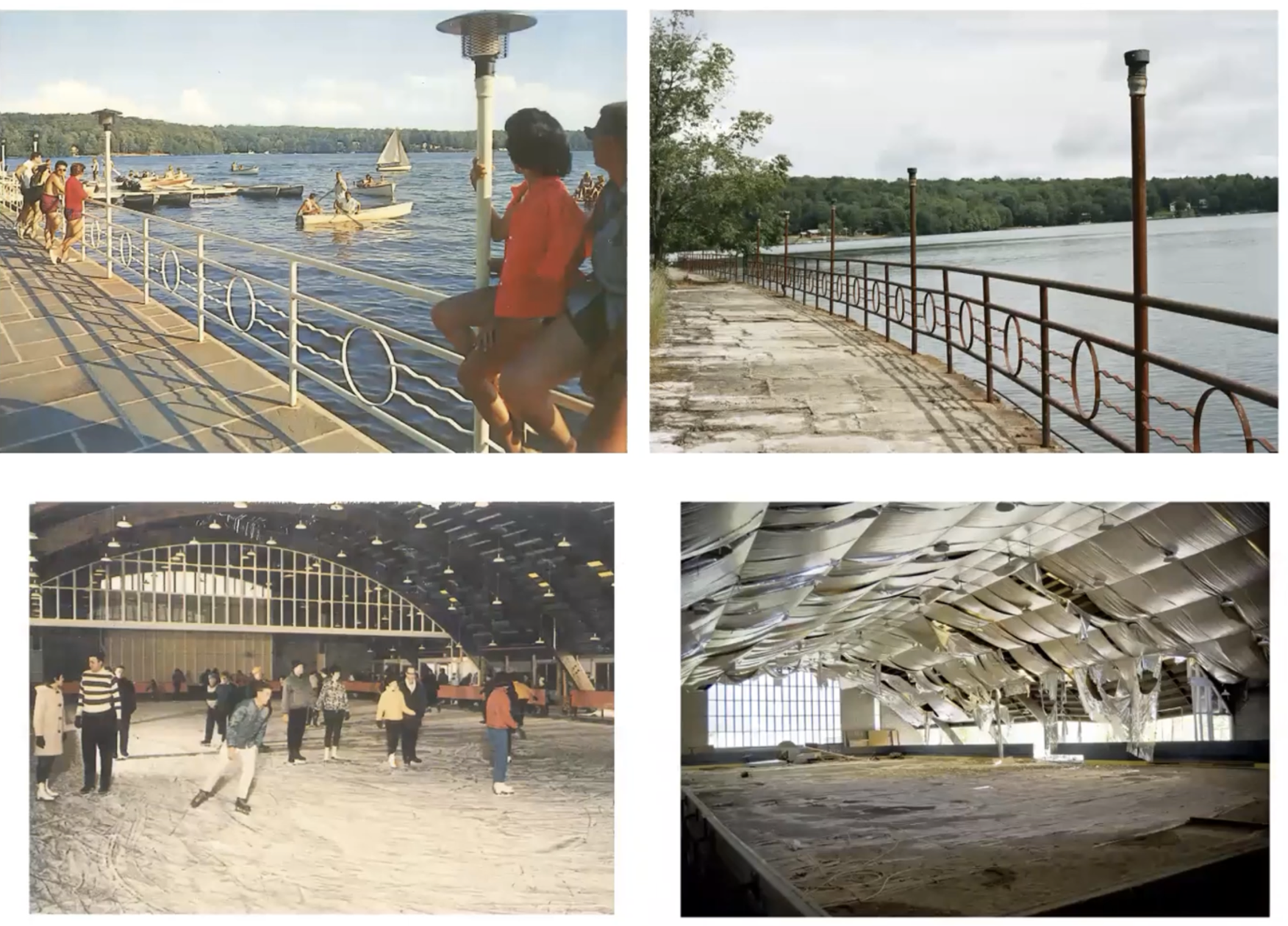Preserving our Jewish Past – The Lower East Side Jewish Conservancy’s Mission – With Stories and Pictures
By Sue Weston and Susie Rosenbluth – Two Sues on the Aisle
With the lifting of COVID restrictions, the Lower East Side Jewish Conservancy (LESJC), a non-profit organization dedicated to historic preservation and revitalization of the Jewish experience since 1998, has resumed in-person touring.
During the COVID lockdown, LESJC offered programs featuring articulate tour guides, authors, and historians who delivered vibrant explorations of the Jewish connections to places and periods—and participants could take advantage of all this right from the comfort of their own living rooms. Through Zoom, the audience was transported miraculously with photographs and stories to the Lower East Side, Jewish Harlem, even Penn Station, and the Catskills.
As anyone who has taken any of LESJC’s virtual tours can attest, the group’s pivot to the remote platform removed physical constraints and allowed their guides to unfold adventures, widen perspectives, providing the Jewish connection—and as anyone who had ever played Jewish geography knows: we are all intricately connected.
The Search for Lost Synagogues
The WanderingJews, David and Heidi Wachs, are modern-day explorers a la Indiana Jones whose adventures include visiting and documenting forgotten synagogues. This brother-sister team’s travel-lust focuses on locating, documenting, and commemorating our rich Jewish past. These siblings are so in synch, they can finish each other’s sentences and seem only to disagree when it comes to selecting their next destination. Heidi looks internationally, such as to Amsterdam, while David prefers to explore the US.
Sadly, in their quest to uncover forgotten historic synagogues, there is no shortage of lost-Jewish communities to visit. Fortunately, they document each discovery with a picture posted (https://www.facebook.com/WanderingJews18) on Facebook, including their 2017 trip to South America, specifically Suriname and the Caribbean island country of Curacao, where they hacked through the forest with machetes uncovering Jewish graves and tracing the Jewish migration.
According to the Wachses, Jews were first permitted to settle in Suriname in 1639, and there were two waves of Dutch Jews, whose ancestors had escaped from Portugal during the expulsion mandated by the Inquisition. The first settlement was in Cassipora, and the second group came in 1652 and settled in Jodensavanne (Jewish Savanna) slightly to the north and closer to the river. These settlers owned sugar plantations that employed African slaves to work the fields. By 1750, there were about 70 such plantations.
At about the same time, Dutch Jews were also settling in Curacao, where they built synagogues and were allowed to establish cemeteries.
Traditions Dating to the Inquisition
The Wachses explored some of these Jewish establishments. In Curacao, they visited Beth Haim, the first Jewish cemetery in the New World with tombstones dating to 1668. They visited Congregation Mikve Israel in Curacao, the oldest synagogue in the Western hemisphere. Built inside the walled city of Wilemsted in 1732, it is a small-scale replica of the Portuguese Synagogue in Amsterdam.
The first synagogue in Cassipora was probably made of wood in 1671 and did not survive.
In 1723, the Neveh Shalom synagogue was built in Suriname’s new capital of Paramaribo. The Wachses found this synagogue and discovered that its floors were made of sand, a practice used during the Spanish and Portuguese Inquisition to muffle the sound.
In 1654, Dutch Jews from neighboring Brazil left Recife. Some went to Suriname, but a more famous group migrated further north up the Atlantic coast, eventually reaching New York’s Lower East Side and providing a connection with the LESC.
During their travels in South America, the dynamic Wachses discovered Jewish gravesites dating back to 1744, where some of the headstones were decorated with skull and crossbones carvings, following another tradition dating from the Spanish and Portuguese Inquisitions.
WanderingJews explore remote US congregations
As part of the same LESJC tour, the Wachses discussed their travels to dwindling Jewish communities in the United States. They try to make these expeditions in time for the High Holidays so that they can help make minyanim at the forgotten synagogues. Some of their exotic destinations have been communities in states such as Alabama, South Dakota, Vermont, and Mississippi.
There is a process behind their investigations: they research historic buildings, knock on doors, often leave a yarmulka or two behind, and then post pictures on their website to preserve the Jewish history.
As a result, the Wachses are creating a living legacy, using photography to preserve memories as they uncover synagogues many of which have been abandoned or repurposed. By creating a photographic record, they are preserving the American-Jewish story while at the same time connecting personally with the many dwindling Jewish communities.
The Borscht Belt: Former Jewish Vacationland Now Abandoned
Some communities have passed the point of no return, leaving only a brief glimpse of their former Jewish past. The LESJC explored this facet of American-Jewish history with author and photographer Marisa Scheinfeld who discussed the vibrant Catskills of her youth.
Born and raised in the area known as the Jewish Catskills, she returned to her roots to find the once-vibrant Borscht Belt in disrepair, abandoned and almost forgotten. Using her camera’s eye, she created a living legacy, a view of the region’s regal past, side-by-side with its humble present, offering a glimmer of hope for the future.
Not originally a Jewish resort area, the Catskills first supported the lumber industry, followed by tanneries after the Civil War. Finally, railroads brought vacationers and gave rise to the mountain resorts it was known for. 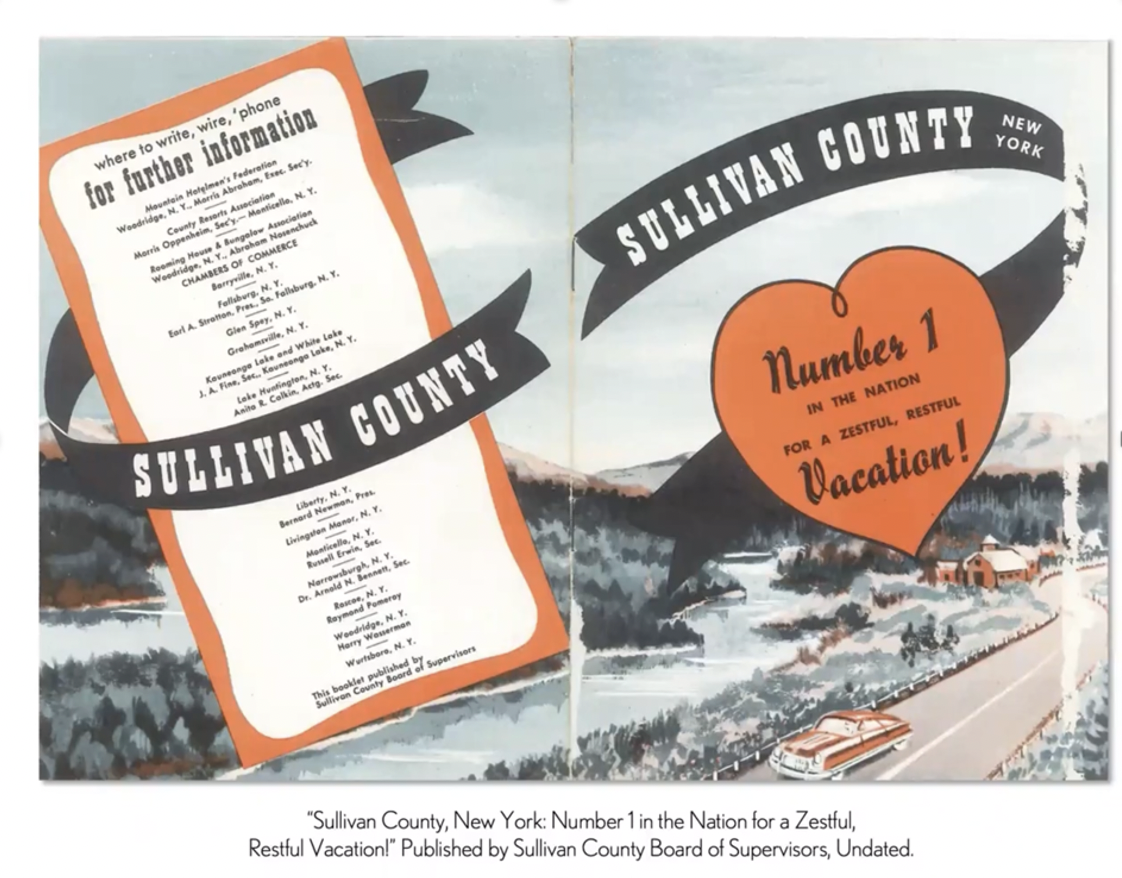
From Non-Jewish to Jewish
The original vacationers were fly fishermen leaving the city for rest and relaxation. Later, many sought to escape tuberculosis and polio epidemics, rampant in New York City. Influenced by the antisemitic sentiment of the 1900s, early resorts did not welcome “Jews or dogs.”
Slowly, Jewish investors began purchasing small hotels and created a Jewish vacationland. Notable landmarks included such legendary hotels as Grossinger’s, Laurel (a hotel that catered to singles), Kutscher’s, and The Nevele.
By the 1960s, there were 538 hotels and 50,000 bungalows, providing an opulence of food, and entertainment year-round. In the Jewish world, going to the country could mean only one thing–the Catskills.
The Decline of the Catskills
But as vacationers discovered air travel and cruises, the Catskills remained stuck in time, and the legendary hotels became relics.
Migration to the suburbs lessened the need to escape the city. In previous eras, women and children vacationed in the country all summer, joined by their husbands on weekends, but after World War II, many women had joined the workforce.
By 1989 the iconic hotels began declaring bankruptcy, buildings were sold, or abandoned.
Documenting the Changes
Ms. Scheinfeld’s photographs infuse new life into distant memories. In her book, The Borscht Belt, revisiting the American Jewish Vacationland, she recreates old photographs using a technique called rephotography. Her goal is to feature two photographs of the same site: then and now. To accomplish this, she photographs the site in its current condition and then juxtaposes it with an image of its former splendor. Her challenge is finding and duplicating the exact position of the older shot. The resulting contrast and evoked memories are poignant.
Her book contains a collection of these photographs, a testament to the past grandeur and the current decay. Ms. Scheinfeld’s photography is a lasting memorial to these majestic buildings which will soon cease to exist. The passage of time is bittersweet.
Ms. Scheinfeld prevents the Catskills from fading into obscurity without a historical marker or a whisper of its Jewish past. Spectacular shots capturing the essence of an elegant past, a bygone era that now belongs to memories, movies, and television. The preservation of the Catskills is essential to the American-Jewish experience, and Ms. Scheinfeld provides a unique perspective, a personal and emotional expose.
She is convinced that the Catskills region is poised for a new beginning. During her LESJC tour, she pointed out that people, eager for a taste of a simpler life, are leaving New York City, supporting B&B’s and other local industries, and bringing together artisans and crafters. The Borscht Belt might have been abandoned, but thanks to Ms. Scheinfeld, it will not be forgotten.
Virtual Tours
Throughout the COVID lockdown, these LESJC virtual tours provided a travel log exploring the Jewish past, allowing armchair explorations through time during a period when physical travel was restricted. One constant is the high-quality LESJC tour guides and the inexhaustible number of topics left to explore.
***
Two Sues on the Aisle bases its ratings on how many challahs it pays to buy (rather than make) in order to see the play, show, film, or exhibit being reviewed. 5 Challahs is our highest rating.
WanderingJews and Marisa Scheinfeld’s talks provided by The Lower East Side Jewish Conservancy received a 4 challah rating.

